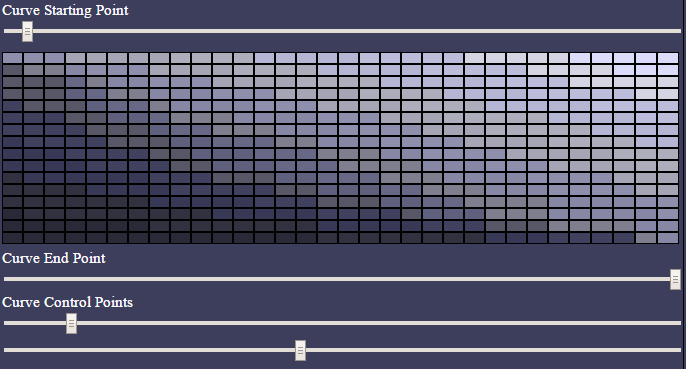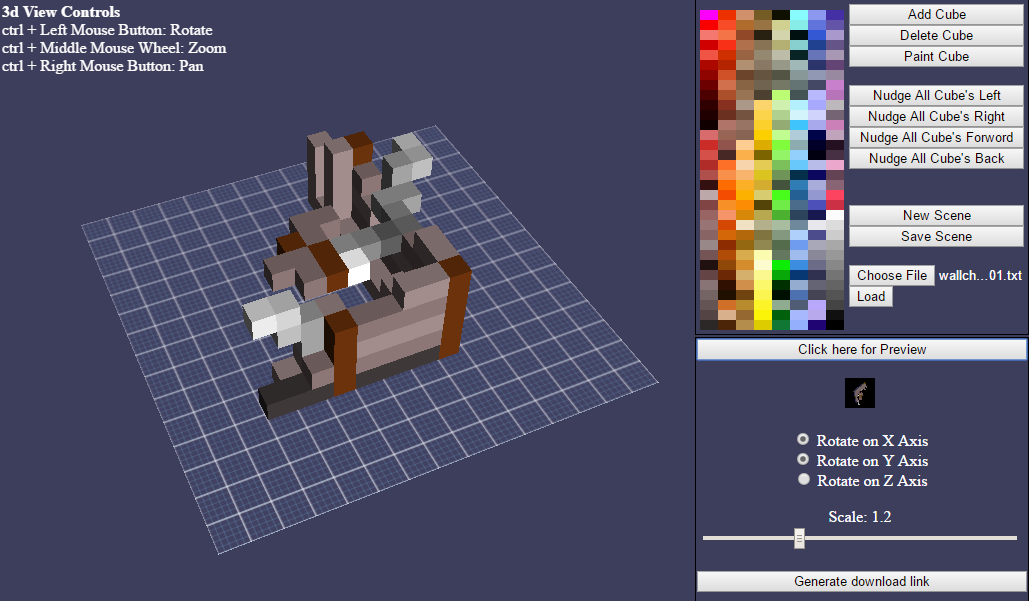


 |  |  |
| VPL Editor: version 1.0: Release date: November 2016 About the voxel.vpl file
About the VPL Editor Version 1.0


Debris Maker version 1.0, Created: November 2016, Updated: Not Yet About Debris Maker version 1.0
Along with this release, I have released a sample pack of test objects I used while developing. Click To Download To use the samples, download and unzip, then load the object text files to have a look.  Current Features
Recommendations Center object in scene - To get best results, nudge the object to the center. Build big - If an object is small it may look pixelated when rendered/ingame. Shadeing - Its best to add custom shading on the build object to keep it looking flat. Rotation - Improvements/Additions to rotations in animation. Future Updates Bigger Scene - Right now it only allows for 10x20x20. MeshPhongMaterial - Will make render look better when feature is added. Pixel identification - Currently using binary search for RBG index values, will switch to HSL. |
| Website developed By: Email: Bot Count: Created: Updated: Pages Generated: Menu: |